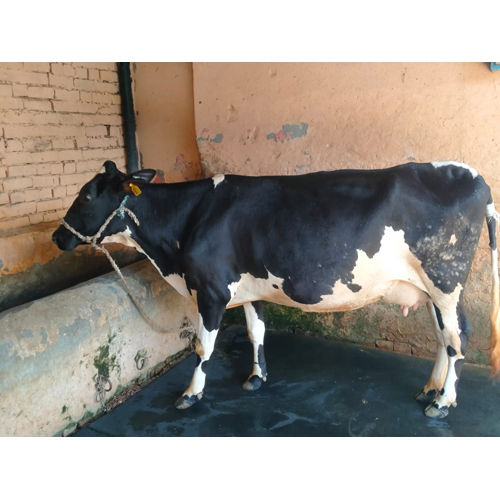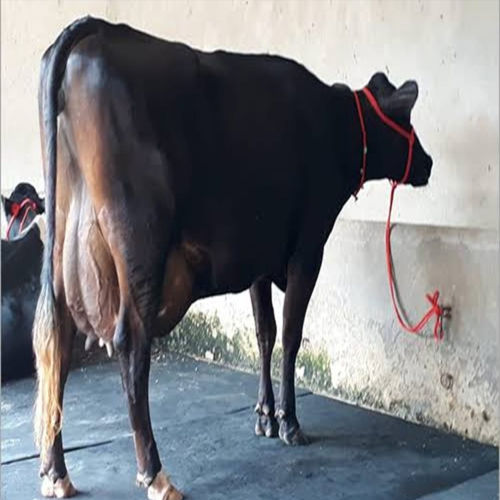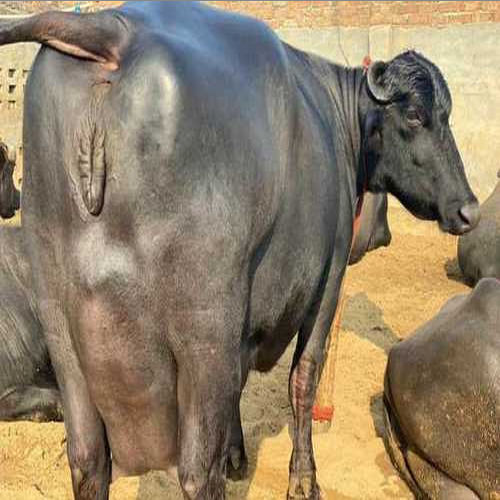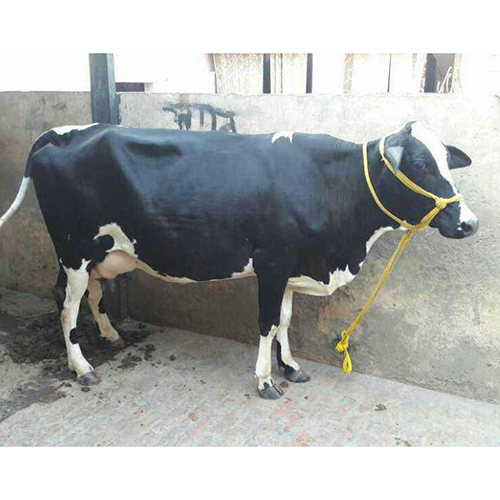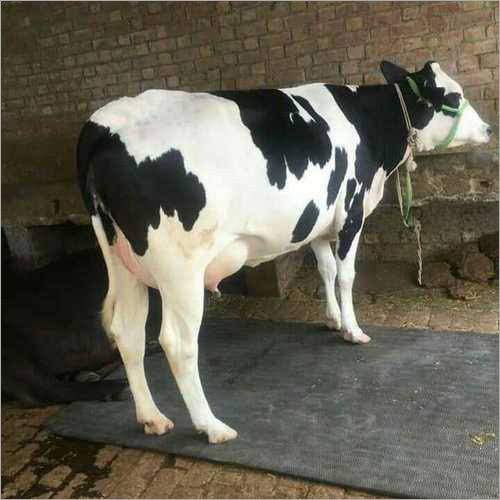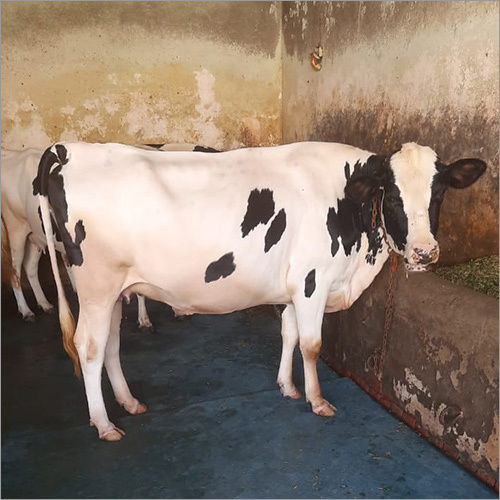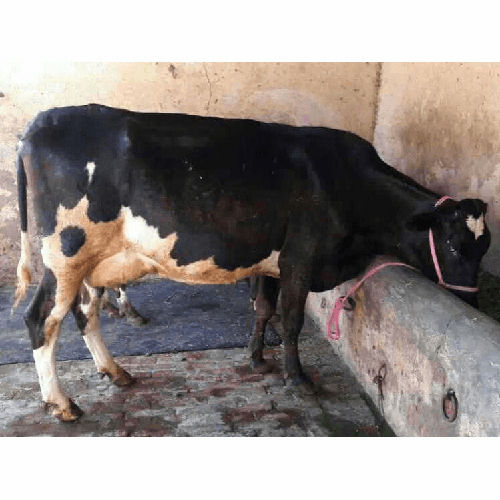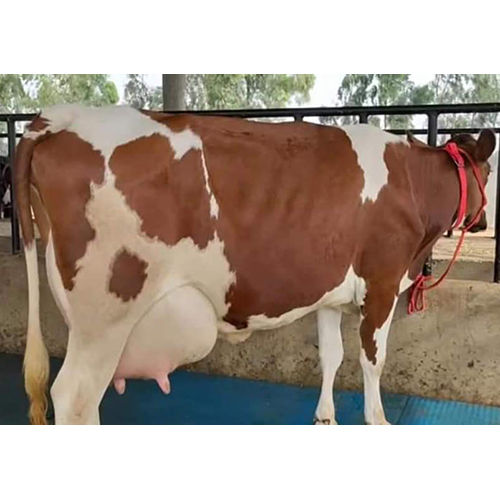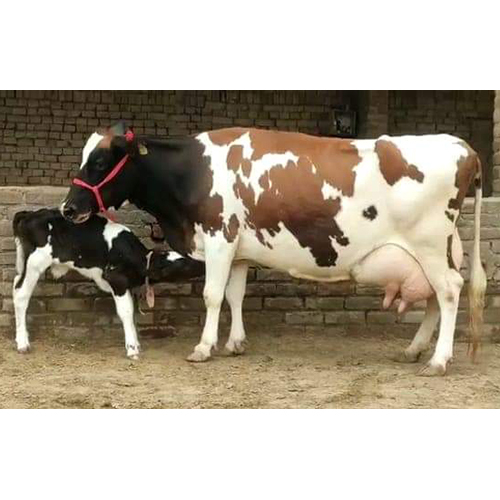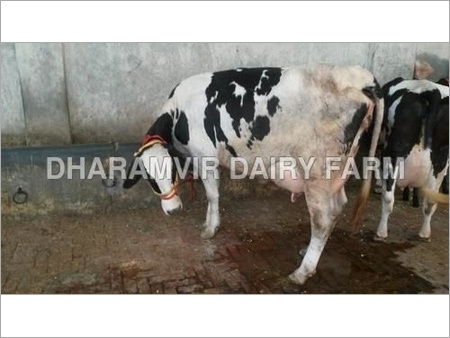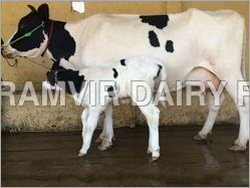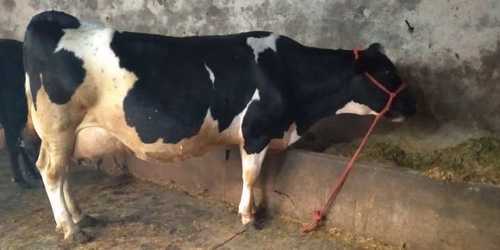- Tradeindia
- Livestock
- Hf Cow
Hf Cow
(416 products)White & Black Holstein Friesian Cow
Price: 120000 INR/Unit
MOQ10 Unit/Units
ColorWhite & black
Product TypeLivestock
Commercial UsesDairy Farm
New Kalinga Enterprises
Dhenkanal
 Trusted Seller
Trusted Seller2 Years
 Super Premium
Super PremiumBlack And White Karnal Dairy Hf Cow
Price: 50000 INR/Piece
MOQ8 Piece/Pieces
ColorBlack and white
Product TypeCow
Commercial UsesDairy Use
Harshit Gupta Dairy Farm
Karnal
 Trusted Seller
Trusted Seller11 Years
 Super Seller
Super SellerWhite Hf Cow With Calf
Price: 45000 INR/Piece
MOQ1 Piece/Pieces
ColorWhite, Black
Commercial UsesDairy, Farming
BreedPure HF
Wet and Dry Salted Cow Leather Hide
Price: 700 USD ($)/Metric Ton
MOQ3000 Metric Ton/Metric Tons
FOB PortPort Klang
Payment TermsLetter of Credit at Sight (Sight L/C), Telegraphic Transfer (T/T), Letter of Credit (L/C)
Supply Ability50000 Per Month
White And Black High Milking Hf Cow
Price: 40000.00 INR/Piece
MOQ10 Number
ColorWhite and Black
Commercial UsesYes
Weight580 Kilograms (kg)
High Milking HF Breed
Price: 52000 INR/Number
MOQ1 Number
Product DescriptionHigh Milking HF Breed
Tharparkar Breed Cow
Price: 50000.00 INR/Piece
MOQ1 Number
ColorBlack
Commercial UsesHome and Dairy Use
High Milking Yield HF Cows
MOQ1 Unit/Units
Product TypeHF Cows
ColorBrown
BreedHolstein Friesian
High Holstein Friesians - Hf Cow
Price: 55000 INR/Piece
MOQ1 Piece/Pieces
ColorBlack & White
Product TypeHolstein Friesians - HF Cow
Commercial UsesFor Milk
Black Hf Messey Cow
MOQ1 Unit/Units
Product TypeHF Messey Cow
Commercial UsesDairy
ColorBlack, White
100% Hf Cow - Color: Black
MOQ5 Number
Product TypeDairy Cow / Buffalo
Commercial UsesDairy Farms
ColorBlack
Top Rated Products
FAQs Related to Hf Cow
White And Black High Breed Hf Cow
Price Trend: 30000.00 - 90000.00 INR/Piece
MOQ1 Piece/Pieces
Product TypeHigh Breed Hf Cow
Commercial UsesMilking
Weight400-500 Kilograms (kg)
Best Quality Hf Cow
Price: 60000 INR/Piece
MOQ1 Piece/Pieces
Product TypeHf Cow
Commercial UsesDairy
BreedHF
White And Black Pure Hf Cow
Price: 55000 INR/Piece
MOQ2 Piece/Pieces
ColorWhite And Black
Product TypeHf Cow
GenderMale, Female
Different Available Hf Cross Cow
MOQ1 Unit/Units
Product TypeDairy Cow / Buffalo
Commercial UsesDairy Farms
ColorDifferent Available
Black And White Hf Cow Gender: Female
Price Trend: 40000.00 - 90000.00 INR/Piece
MOQ1 Piece/Pieces
Product TypeBlack And White HF Cow
ColorBlack And White
BreedHF
Nathu Ram Dairy Farm
Karnal
 Trusted Seller
Trusted Seller8 Years
 Premium Seller
Premium SellerCross Bread Hf Cow - Color: White And Brown
MOQ1 Unit/Units
Product TypeDairy Cow
Commercial UsesDairy Farms
ColorWhite and Brown
Spotted Hf Cow For Dairy
Price: 45000 INR/Piece
MOQ5 Piece/Pieces
ColorSpotted
Product TypeHF Cow For Dairy
Commercial UsesMilk
Indian HF Cows
Price: 30000 INR/Unit
MOQ6 Unit/Units
Supply Ability80 Per Day
Delivery Time1 Days
Cross Breed Hf Cow
Price: /Piece
MOQ05 Piece/Pieces
Supply Ability100 Per Day
Delivery Time3 Days
Spotted Low Price Hf Cow
Price: 30000 INR/Piece
MOQ5 Piece/Pieces
ColorSpotted
Commercial UsesDairy farming
AgeAdult
Disease Free Black And White HF Cows
Price: 50000 INR/Unit
MOQ2 Unit/Units
Product TypeHf Cows
Commercial UsesMilk
Weight3 ton
Black & White Pure Hf Breed Cow
MOQ1 Unit/Units
Product TypeDairy Cow
Commercial UsesDairy Farms
ColorBlack & White
Dairy Hf Cow Gender: Female
Price Trend: 40000.00 - 50000.00 INR/Unit
MOQ5 Unit/Units
Product TypeDairy HF Cow
Commercial UsesDairy Farm
GenderFemale
Black And White Hf Cow
Price: 50000 INR/Piece
MOQ10 Piece/Pieces
ColorBlack and white
Product TypeHF Cow
Commercial UsesDairy farming
Latest from Hf Cow
Dairy HF Cow
By:
Haryana Kisan Dairy Farm
Indian HF Cow
By:
Shree Shyam Dairy Farm
Dairy Farm HF Cow
By:
Balwant Dairy Farm
Pure HF Cow
By:
Ranwan Dairy Farm
Pure HF Cow
By:
Shree Siddhivinayak Dairy Farm
All About HF Cow
Introduction
Dairy cattle of the Holstein Friesian breed can be traced back to the provinces of North Holland and Friesland in the Netherlands, as well as Schleswig-Holstein in Northern Germany (sometimes shortened to "Holsteins" in North America, but more commonly "Friesians" in the UK and Ireland). In terms of milk production, they are unrivalled.
Over 150 countries are home to the Holstein-Friesian, making it the most widely distributed cattle breed in the world. North American and South American dairy farmers initially imported their livestock from the Netherlands to meet the rising demand for milk as the New World expanded.
From 1621 to 1664, both black and white cattle from Europe were brought to the New World. Many Dutch farmers initially settled in the eastern part of New Netherland (present-day New York and Connecticut) in the fertile valleys of the Hudson and Mohawk rivers. Most likely, they brought cattle from their homeland and bred them with cattle they bought in the colony. After that, local cows were known as Dutch cattle and prized for their ability to produce milk.
The Dutch cattle that were imported to the British Isles up until the 18th century served as the foundation for several breeds in England and Scotland. The great David Low wrote down, "Specifically, the Holderness district north of the Humber, through the Yorkshire moorlands, and into the plains was where the Dutch breed took root.
Highest quality English dairy cattle "In 1840, the people of Holderness showed clear signs of their Dutch ancestry.
Types of HF Cow
There are more than 150 countries where you can find Holstein-Friesians, making them the most widely distributed cattle breed in the world. For your perusal, we present the following varieties of HF cow
Breed Characteristics
Piebald patterns are typical of Holsteins, and their coats are either black and white or red and white. Some exceptionally rare examples sport a combination of black and red pigmentation on a white background. This one-of-a-kind hue is brought on by a substance called "red factor Also, "blue" is a recognised hue.
The bluish hue of this hf cow is the result of white hairs intermixing with the black hairs. Some people in the farming community also refer to this colouring as "blue roan." They produce an astounding annual average of 10,220 kilograms of milk, or 22,530 pounds. Butterfat accounts for 3.7% of the total weight of this milk, while protein makes up 3.1% (or 719 pounds).
At birth, a healthy calf weighs at least 40-50 kg (75-110 lb). Mature Holstein cows typically weigh 680 to 770 kilograms (1,500 to 1700 lb) and have a shoulder height of 145 to 165 centimeters (58 to 65 inches). At 11 to 14 months of age, or when their weight is 317 to 340 kilograms (700 to 750 pounds) or 55% of their final adult weight, Holstein heifers are optimally ready for breeding.
1. Red and white Holsteins
In Holsteins, a recessive gene controls the expression of a red coat colour instead of a black one. Assuming that the allele 'B' refers to the dominant black and 'b' represents for the recessive red, cattle with the paired alleles 'Bb,' 'bB,' or 'BB' would be black and white, whilst 'bb' animals would be red and white.
Cattle with "broken" colours first appeared in the Netherlands from Central Europe in 13c documents. Between 1869 and 1885, the United States imported the vast majority of its foundation stock. A group of early breeders decided that only black and white cows would be allowed in the herd book, hence the breed's name, and that they would be called Holsteins. A number of people voiced their disagreement, arguing that the focus should be on the cattle's quality rather than their appearance and that the name "Dutch" rather than "Holstein" should be used.
In 1964, the Red and White Dairy Cattle Association (RWDCA) in the United States established a registry system for Red and White dairy cattle. Its founding members were interested in creating a dairy registry for the Milking Shorthorn cattle, as well as the red and white Holsteins, that they had bred in the past.
Since the red colour factor is shared between the Milking Shorthorn and the red and white Holstein, the latter were considered as potential outcrossing individuals in the quest to increase milk production.
Due in large part to the RWDCA’s “open herd book” policy, Red and White Holsteins has risen to prominence in the dairy industry.
2. Polled Holsteins
In 1889, the United States confirmed the existence of the first polled Holstein. Polled Holsteins are hornless because they carry the dominant polled gene. Among Holsteins, the polled gene has always been extremely rare. But as dehorning raises animal welfare concerns, there has been a surge in people looking into polled genetics.
3. British Friesian cattle
There has been a significant increase in the number of Holstein bloodlines in the UK as a result of the focus on increasing production through indexing and lifetime profit scores. However, advocates of the traditional British Friesian argue that these criteria do not accurately reflect the true profitability or the production of the Friesian cow.
Friesian breeders have speculated that current conditions in the UK, which are reminiscent of the 1950s through the 1980s in terms of low milk price and the need for extensive, low-cost systems for many farmers, may eventually lead to a revaluation of the characteristics of the British Friesian.
During this time period, the UK dairy cow population shifted to be dominated by this breed, and the UK exported stock and sperm to many countries. It could be argued that the concept of "dual-purpose" animals is now archaic, but the Friesian is still a great fit for many farms, especially those that rely heavily on grazing.
HF Cow Origin
Cattle of the Holstein Friesian breed can be traced back to the northern regions of the Netherlands and Germany. The Friesland region of Holland and the Holstein region of northern Germany are the primary locations of the Holstein Friesian breed, hence the name.
The milk production of these cattle is unrivalled. The Holstein Friesian has spread all over the world from its original home in northern Europe. Many of them live on dairy farms in the United States and the United Kingdom.
A consistent population of the Holstein breed has developed in the United Kingdom as a result of the import of Dutch cattle to England and parts of Scotland up to the eighteenth century. Since the eighteenth century, Dutch breeds have been widely regarded as the best in England.
An extensive population of dairy cattle, including hybrids descended from early imports of Holstein and native British cattle breeds, has developed as a result of these early shipments of cattle to England and other parts of the United Kingdom.
From 1661 to 1665, the United States welcomed Black and White cattle from Europe, marking the beginning of the Holstein-Friesian breed in the Americas. When Dutch farmers brought their herds of Holstein cattle to the Hudson Valley, they farmed in what is now New York and Connecticut. In contrast, a statement made by the Holland Land Company in 1795 indicates that the first imported cattle to New York were as large as oxen. Two bulls and six cows made up the import.
Hf Cow Price in India
People prefer hf cows to the more common desi cows for use in dairy farming. Milk output from HF cows is significantly greater than that of desi Indian cows.
-
1. The average cost of an HF cow in India is between INR 40,000 and INR 80,000.
-
2. During the milking season, a Hf cow could be purchased for between 90,000 and 150,000
-
3. In India, the going rate for a sated Hf cow was somewhere in the range of 70,000 to 100,000 rupees (INR
-
4. The difference in cost is a direct result of their age. The price of aHf cow increased as its age decreased.
What is the Full Form of HF Cow?
An HF cow is a Holstein Friesian, to give it its full name. Instead of raising a large herd of Desi cows, many people would like to raise a smaller herd of hf cows for dairy. The milk output of HF cows is significantly higher than that of desi Indian cows.
The Holstein-Friesian is the most widely distributed cattle breed, with over 150 countries providing homes for these friendly cattle. It is estimated that HF cows have been selectively bred for their dairy qualities for the past two thousand years. They have a long history of widespread distribution across the richer lowlands of continental Europe due to their high milk production value.
Client Testimonials & Reviews

MrAmit
INNOVA DAIRY FARM
I am very happy for your working on my account. I am getting good response from your side. Thanks for your support.

SunilBhatia
BHATIA KENNEL
We connected with tradeindia.com last year and get enquiries from all over India, tradeindia is very good engine to connect with all over India. Now our dogs and product is export in all cities and state of India, so in short tradeindia.com is a very good engine to connect with all over world. Thanks tradeindia, We are Happy.

MrHarshit
HARSHIT GUPTA DAIRY FARM
We have associated with tradeindia and we are hoping that getting more benefits in this time.
Hf Cow Price List
Product Name | Expected Price |
|---|---|
| Pregnant HF Cow | 32000 |
| Hf Cow | 45000 |
| Pure Hf Cow | 30000 |
| HF Cow | 130000 |
| Healthy And Disease Free HF Cows | 65000 |
| Dairy HF Calf | 40000 |
| Hf Cows | 50000 |
| Hf Cows | 45000 |
| HF Cow | 78000 |
| Best Quality Hf Cow | 60000 |
This Data was Last Updated on 2024-12-12
Hf Cow Manufacturers | Suppliers in India
Company Name | Member Since |
|---|---|
Harshit Gupta Dairy Farm Karnal, India | 11 Years |
Gupta Dairy Karnal, India | 11 Years |
Narwal Dairy Farm Karnal, India | 10 Years |
Nathu Ram Dairy Farm Karnal, India | 8 Years |
Karnal Dairy Farming Karnal, India | 8 Years |
Kissan Dairy Farm Karnal, India | 8 Years |
Gokul Dairy Farm Karnal, India | 7 Years |
Innova Dairy Farm Karnal, India | 7 Years |
Dharamvir Dairy Farm Karnal, India | 7 Years |
J. K. Dairy Farm Karnal, India | 7 Years |
Upcoming Tradeshows
Gulfood 2025
Mon, 17 Feb, 2025 - Fri, 21 Feb, 2025
National Expo Raipur 2025
Sun, 19 Jan, 2025 - Wed, 22 Jan, 2025
International Crop Science Conference and Exhibition 2025
Tue, 21 Jan, 2025 - Wed, 22 Jan, 2025
LogiMAT India 2025
Thu, 13 Feb, 2025 - Sat, 15 Feb, 2025
WATER EXPO VIJAYAWADA 2025
Wed, 29 Jan, 2025 - Fri, 31 Jan, 2025
Printing South China 2025
Tue, 04 Mar, 2025 - Thu, 06 Mar, 2025
CHINA INTERNATIONAL FURNITURE FAIR 2025
Tue, 18 Mar, 2025 - Fri, 21 Mar, 2025
INDIA ART FESTIVAL 2024
Thu, 19 Dec, 2024 - Sun, 22 Dec, 2024
MachAuto 2025
Fri, 23 May, 2025 - Mon, 26 May, 2025
10th IMTOS-India Machine Tools Show 2025
Thu, 15 May, 2025 - Sun, 18 May, 2025
Popular Categories






























